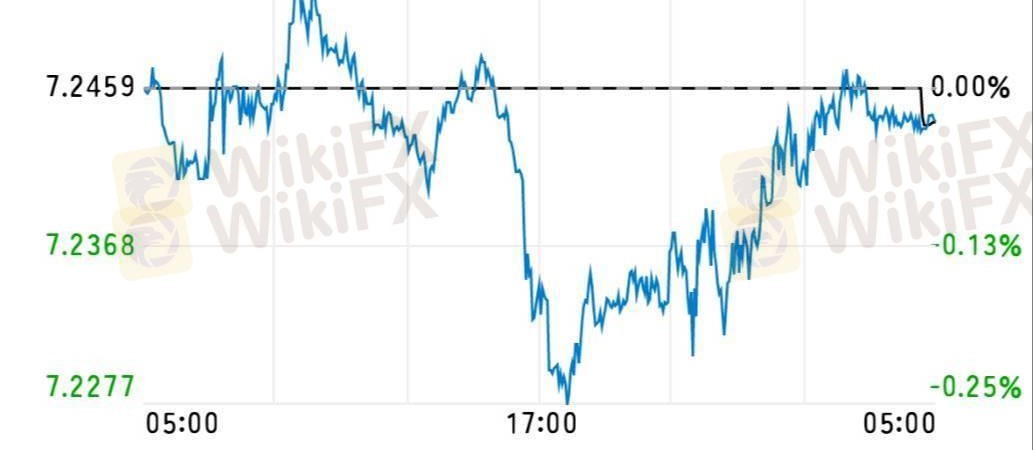
2025-03-30 23:18
IndustryImpact of Fed Policy on Emerging Market Currencies
#FedRateCutAffectsDollarTrend
The Federal Reserve’s monetary policy significantly impacts emerging market (EM) currencies due to its influence on global capital flows, interest rates, and risk appetite. Here’s how:
1. Interest Rate Hikes & Tightening Policy
When the Fed raises interest rates or reduces its balance sheet (quantitative tightening), emerging market currencies tend to depreciate due to:
Capital Outflows: Higher U.S. rates attract investors to dollar-denominated assets, leading to capital flight from EMs.
Stronger Dollar: A rising dollar puts pressure on EM currencies, increasing the cost of imports and external debt.
Higher Borrowing Costs: EM countries often borrow in dollars, making debt repayments more expensive when their currencies weaken.
2. Interest Rate Cuts & Loosening Policy
When the Fed lowers interest rates or engages in quantitative easing (QE), EM currencies typically benefit because:
Capital Inflows: Lower U.S. rates push investors toward higher-yielding EM assets, strengthening local currencies.
Weaker Dollar: A declining dollar reduces pressure on EM economies, making imports and debt servicing cheaper.
Easier Financing Conditions: Lower U.S. rates help EM governments and businesses borrow at more favorable terms.
3. Inflation & Risk Sentiment
Fed Policy & Inflation: If the Fed tightens policy aggressively to combat U.S. inflation, EM currencies often suffer due to risk aversion.
Risk-On vs. Risk-Off: When the Fed is dovish (keeping rates low), investors are more willing to take risks, benefiting EMs. Conversely, hawkish policies drive investors toward safe-haven assets like the dollar, weakening EM currencies.
4. Commodity Prices & Trade Balance
Impact on Commodity Exporters: Many EMs are commodity-dependent (e.g., Brazil, Russia, South Africa). A strong dollar often leads to lower commodity prices, hurting these economies.
Impact on Importers: Countries that import commodities (e.g., India) may face higher costs when the dollar strengthens, leading to trade imbalances and currency depreciation.
5. Central Bank Responses in EMs
Rate Hikes: Some EM central banks raise rates to defend their currencies, but this can slow economic growth.
Currency Interventions: Some use foreign exchange reserves to stabilize their currencies.
Capital Controls: In extreme cases, governments may impose restrictions on capital flows to prevent currency crises.
Would you like an analysis of a specific country or region?
Like 0
mingling
Broker
Hot content
Industry
Event-A comment a day,Keep rewards worthy up to$27
Industry
Nigeria Event Giveaway-Win₦5000 Mobilephone Credit
Industry
Nigeria Event Giveaway-Win ₦2500 MobilePhoneCredit
Industry
South Africa Event-Come&Win 240ZAR Phone Credit
Industry
Nigeria Event-Discuss Forex&Win2500NGN PhoneCredit
Industry
[Nigeria Event]Discuss&win 2500 Naira Phone Credit
Forum category

Platform

Exhibition

Agent

Recruitment

EA

Industry

Market

Index
Impact of Fed Policy on Emerging Market Currencies
 Italy | 2025-03-30 23:18
Italy | 2025-03-30 23:18#FedRateCutAffectsDollarTrend
The Federal Reserve’s monetary policy significantly impacts emerging market (EM) currencies due to its influence on global capital flows, interest rates, and risk appetite. Here’s how:
1. Interest Rate Hikes & Tightening Policy
When the Fed raises interest rates or reduces its balance sheet (quantitative tightening), emerging market currencies tend to depreciate due to:
Capital Outflows: Higher U.S. rates attract investors to dollar-denominated assets, leading to capital flight from EMs.
Stronger Dollar: A rising dollar puts pressure on EM currencies, increasing the cost of imports and external debt.
Higher Borrowing Costs: EM countries often borrow in dollars, making debt repayments more expensive when their currencies weaken.
2. Interest Rate Cuts & Loosening Policy
When the Fed lowers interest rates or engages in quantitative easing (QE), EM currencies typically benefit because:
Capital Inflows: Lower U.S. rates push investors toward higher-yielding EM assets, strengthening local currencies.
Weaker Dollar: A declining dollar reduces pressure on EM economies, making imports and debt servicing cheaper.
Easier Financing Conditions: Lower U.S. rates help EM governments and businesses borrow at more favorable terms.
3. Inflation & Risk Sentiment
Fed Policy & Inflation: If the Fed tightens policy aggressively to combat U.S. inflation, EM currencies often suffer due to risk aversion.
Risk-On vs. Risk-Off: When the Fed is dovish (keeping rates low), investors are more willing to take risks, benefiting EMs. Conversely, hawkish policies drive investors toward safe-haven assets like the dollar, weakening EM currencies.
4. Commodity Prices & Trade Balance
Impact on Commodity Exporters: Many EMs are commodity-dependent (e.g., Brazil, Russia, South Africa). A strong dollar often leads to lower commodity prices, hurting these economies.
Impact on Importers: Countries that import commodities (e.g., India) may face higher costs when the dollar strengthens, leading to trade imbalances and currency depreciation.
5. Central Bank Responses in EMs
Rate Hikes: Some EM central banks raise rates to defend their currencies, but this can slow economic growth.
Currency Interventions: Some use foreign exchange reserves to stabilize their currencies.
Capital Controls: In extreme cases, governments may impose restrictions on capital flows to prevent currency crises.
Would you like an analysis of a specific country or region?
Like 0
I want to comment, too
Submit
0Comments

There is no comment yet. Make the first one.

Submit
There is no comment yet. Make the first one.